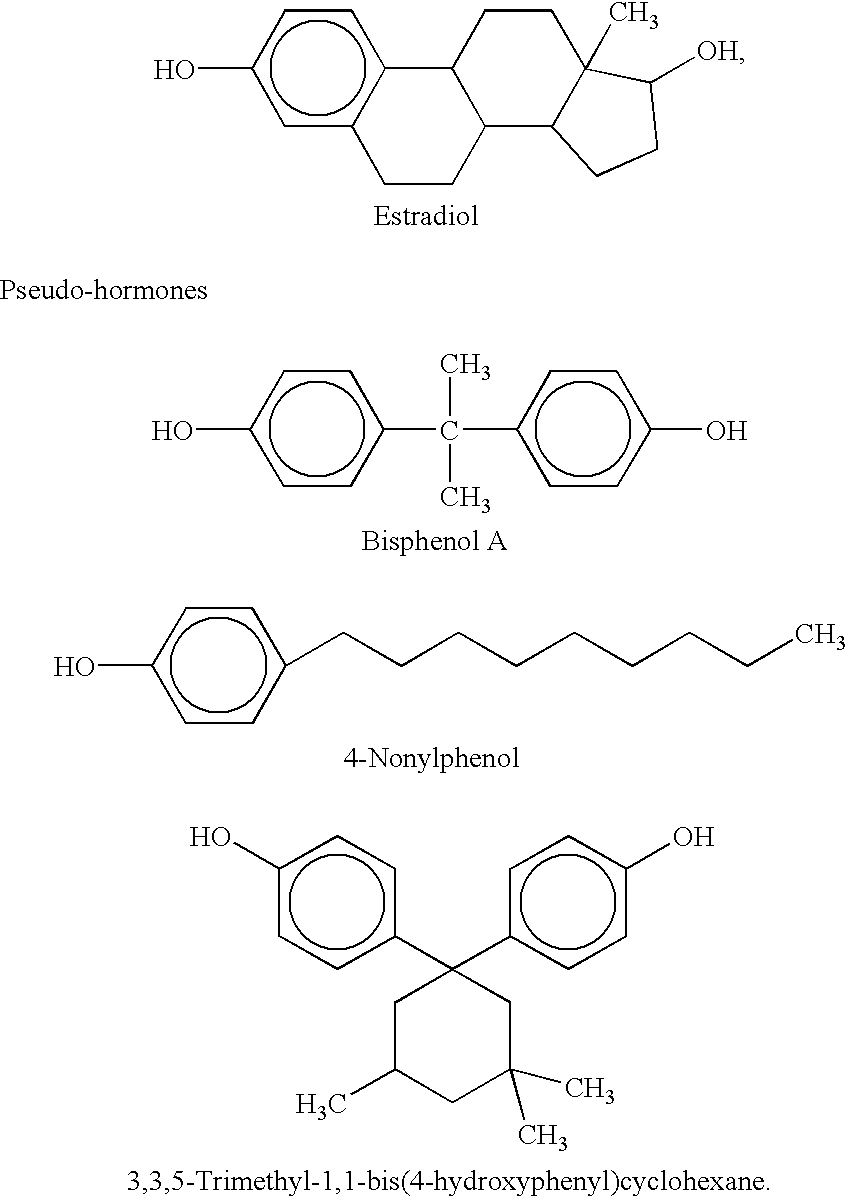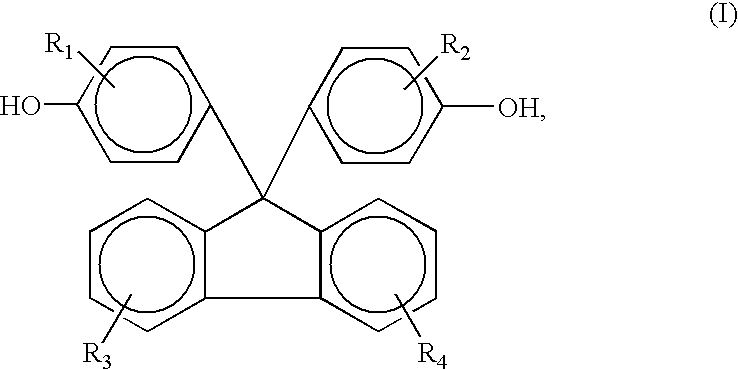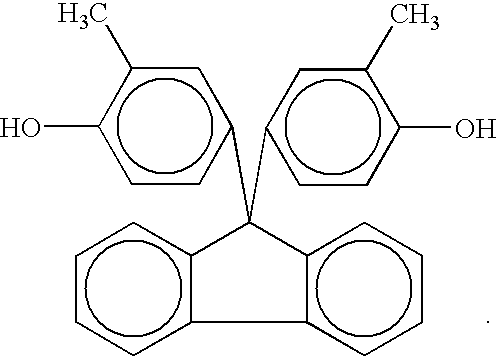Polycarbonate resin having low tendency of releasing environmental endocrine disruptors
a technology of polycarbonate resin and environmental endocrine disruptor, which is applied in the field of polycarbonate resin, can solve the problems of insufficient human safety consideration and undesirable use of bisphenols
- Summary
- Abstract
- Description
- Claims
- Application Information
AI Technical Summary
Benefits of technology
Problems solved by technology
Method used
Image
Examples
example 2
226.8 g (0.60 mol) of 9,9-bis(3-methyl-4-hydroxyphenyl)fluorene represented by the following formula: ##STR11##
36 g (0.40 mol) of 1,4-butanediol, 225 g (1.05 mol) of diphenyl carbonate and 1.0.times.10.sup.-7 mol of sodium hydrogen carbonate were introduced into a 1-liter, four-necked flask equipped with a stirrer and a distiller, heated at 200.degree. C. in an atmosphere of nitrogen, and stirred for 40 minutes to melt them completely.
The pressure was then reduced to 150 mmHg, with the temperature elevated to 260.degree. C. at a rate of 60.degree. C. / hr. This condition was maintained for 120 minutes to conduct an ester exchange reaction. The pressure was then reduced to 1 mmHg or less, and the reaction was continued at 280.degree. C. for 2 hours. After the reaction was completed, nitrogen was blown into the flask so that the inside thereof returned to normal pressure, and a polycarbonate resin produced was taken out.
As a result of measurement in methylene chloride at 20.degree. C., ...
PUM
| Property | Measurement | Unit |
|---|---|---|
| pressure | aaaaa | aaaaa |
| temperature | aaaaa | aaaaa |
| temperature | aaaaa | aaaaa |
Abstract
Description
Claims
Application Information
 Login to View More
Login to View More - R&D
- Intellectual Property
- Life Sciences
- Materials
- Tech Scout
- Unparalleled Data Quality
- Higher Quality Content
- 60% Fewer Hallucinations
Browse by: Latest US Patents, China's latest patents, Technical Efficacy Thesaurus, Application Domain, Technology Topic, Popular Technical Reports.
© 2025 PatSnap. All rights reserved.Legal|Privacy policy|Modern Slavery Act Transparency Statement|Sitemap|About US| Contact US: help@patsnap.com



